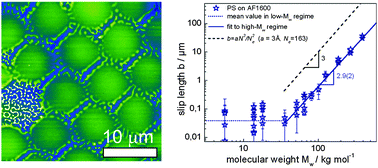Can liquids slide? Linking stability and dynamics of thin liquid films to microscopic material properties
Abstract
Whether a lubricant or a coating wets a surface or not is of great technical importance. Theoretically, it is possible to predict the stability of a thin liquid film on a surface, since it is governed by the effective interface potential. In practice, however, a prediction can be quite cumbersome, since liquids as well as surfaces often consist of numerous components which all influence the effective interface potential. A molecular layer on a substrate's surface like a self-assembled monolayer mainly changes the short-range potential whereas the composition of the substrate below the surface determines the long-range interactions such as the van der Waals potential. The interplay of short- and long-range interactions, including the dielectric properties of all layers in the case of van der Waals interactions, governs the stability of a liquid film. If the film is not stable, distinct rupture mechanisms can be observed causing characteristic film morphologies: spinodal dewetting and dewetting by nucleation of holes, which both entail liquid flow and reveal new routes to study microscopic parameters such as the hydrodynamic boundary condition at the solid/liquid interface. A rather old question turns out to become very important again: Can liquids slide? The article links stability and dynamics of thin liquid films to microscopic material properties and, moreover, describes their experimental access.


 Please wait while we load your content...
Please wait while we load your content...